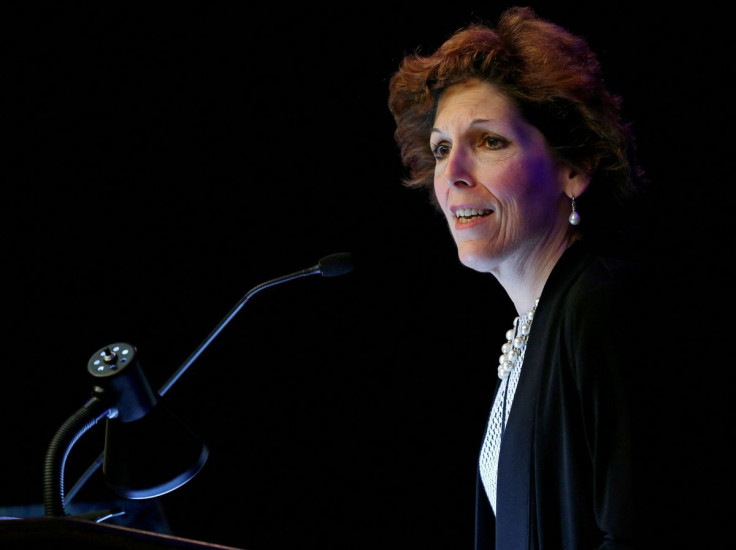Fed Policymakers March Toward Bigger Rate Hike In May

The Federal Reserve needs to act aggressively to bring down high inflation, and doing so could very well include a half-percentage-point rate hike at its next policy meeting in May, two U.S. central bank policymakers said on Wednesday.
"I would like to front-load some of that," Cleveland Fed President Loretta Mester said on a call with reporters when asked about the path of interest rate increases this year. "I think it's important that we start moving that rate up and I think that better positions us if we do it earlier rather than later for what happens in the second half of the year."
Her sense of urgency was echoed by San Francisco Fed President Mary Daly, who said she would be supportive of such a move if the data warrants it, noting that "inflation, inflation, inflation" was everyone's top concern.
"I have everything on the table right now. If we need to do 50 (basis points), 50 is what we'll do, " Daly said at an event organized by Bloomberg.
Daly has often been more cautious than her colleagues about policy tightening, and her openness to a bigger-than-usual rate hike in May shows the Fed's rising sense of urgency that inflation, running at more than three times the central bank's 2% target, requires swift and concerted action to prevent it from getting entrenched.
Fed Chair Jerome Powell earlier this week said the central bank would move "expeditiously" in raising interest rates this year and left the door wide open to a larger hike at the May 3-4 policy meeting.
Markets have taken that view on board, with traders pricing in two half-percentage-point hikes in coming meetings, and a year-end policy rate range of 2.25%-2.5%.
BALANCE SHEET REDUCTIONS
Powell, speaking to a National Association for Business Economics conference on Monday, also said May could mark the start of reductions in the central bank's nearly $9 trillion balance sheet, which ballooned during the COVID-19 pandemic as policymakers strove to bolster the economy.
Trimming the Fed's portfolio of Treasuries and mortgage-backed securities would put further downward pressure on inflation, providing what Daly said on Wednesday would be the equivalent of at least one quarter-percentage-point rate hike this year.
"I think the data will tell us whether 50 basis points, or 25 basis points with the balance sheet, is the right recipe; or 50 basis points with the balance sheet," she said.
Fed policymakers last week projected a total of seven rate hikes for 2022, a view that Daly said embeds some "front-loading" of policy tightening.
"We're prepared to do whatever it takes to ensure price stability, and in the wake of all of the other challenges that we have," Daly said.
Mester also told reporters there is nothing to stop the Fed from hiking interest rates and beginning to reduce its balance sheet at the same policy meeting.
"I think given the situation we're in and the communications that Chair Powell has already made about the balance sheet process, I don't have concerns that that would be destabilizing, and I think that we have to recognize inflation is very elevated," Mester said, noting that financial markets could handle such a move. "We have to do what we can with both our policy tools to get inflation under control."
Mester also repeated her view that 2.5% would be the appropriate level for the federal funds rate at the end of this year, which would require "some" 50-basis-point rate rises.
Daly said she believes the Fed's benchmark overnight interest rate will likely need to go above 2.5%, but not until next year.
© Copyright Thomson Reuters 2024. All rights reserved.







